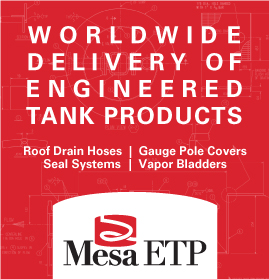New remotely-operated tank crawler developed to safely access a tank floor
Researchers at Robotics and Scalability Technology LLC, Houston, Texas, have developed a new crawler capable of safely accessing a tank’s floor, eliminating the need for team to enter for inspections.
Most chemical and oil stockpiling tanks are made of steel plates that are welded together to frame the structure. The material and the welds are assessed for assembling surrenders when developed, and must be examined throughout their administration life for indications of harm.

The carbon steel is inclined to wear, and in a few conditions splits can shape after some time. Non Destructive Testing staff utilise visual, X-beam, ultrasonic and other assessment techniques to scan for flaws and service damages.
Inspections and thickness measurements of the tank walls can be made by inspectors using man lifts or rope access. However, a substantially more secure approach to make an assessment is to utilise a crawling robot. These crawlers use patent pending vacuum and locomotive seal to climb the structures.
Utilising remote controls, an operator guides them into position and makes the fundamental estimations. Yet accessing the tank floor is considerably more difficult than elsewhere in the tank. The floor is especially inclined to wear because of erosion and tank proprietors must locate the frail spots in the floors before they rupture.
This frequently includes the need to deplete the substance, expelling the layer of muck from the base and cleaning the tanks so an examination workforce may enter it.
However, researchers at Robotics and Scalability Technology LLC, Houston, Texas, have developed a new crawler capable of climbing ferrous and non-ferrous structures for example stainless tanks or concrete tanks.
“We completed a field deployment on a water tower where performing remote coating thickness inspections,” said the company. “The amount of work accomplished with our robot in two hours would have taken two days with an inspector in any conventional way (hanging off a rope or using a lift, scaffolding, etc.). Plus costs and energy to perform this inspection conventionally are significantly higher.”
For more information, visit: www.rastllc.com
17th Apr 2018














